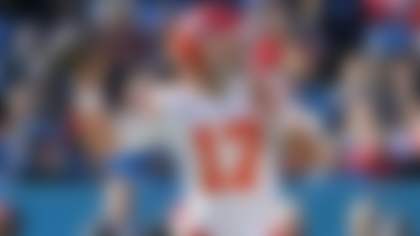Gabe Feldman is an associate professor of law and director of the sports law program at Tulane University Law School. Follow him on Twitter @SportsLawGuy
After several months of litigation and negotiation, we finally appear to be on the verge of a new collective bargaining agreement between the NFL and its players.
Before the final CBA can be signed and put into effect, however, there's still some work to be done. Aside from resolving any remaining issues in the CBA itself, the parties have to deal with a few lingering legal issues.
Here's a quick look at some of the things we can expect over the next 24 to 48 hours.
The lawsuits will be resolved
Although a new CBA always has been the ultimate goal for the players and owners, the negotiations took a significant detour in March when the players dissolved their union and filed a class-action antitrust lawsuit, Brady et al v. National Football League et al, in federal court in Minnesota.
The Brady case, of course, isn't the only lawsuit still pending between the parties. On March 1, Judge David Doty issued a ruling in the "lockout insurance" case, finding that the NFL had breached its duty to the players by agreeing to lower rights fees from its television partners in exchange for a guarantee of over $4 billion for this upcoming season even if games were missed because of a lockout. The parties are still waiting for a ruling from Judge Doty on the amount of damages that will be awarded to the players (and any final ruling by him would be subject to appeal to the owner-friendly 8th U.S. Circuit Court of Appeals).
As part of the agreement to form a new CBA, these lawsuits will be resolved, either through a formal settlement between the parties (which will be subject to approval by the court) or by voluntary dismissal by the players. The resolution of the Brady case merely will be a formality, however, because under the "non-statutory labor exemption," the terms of a CBA are immune from attack under antitrust law. Thus, the players' antitrust claims in the Brady case will have no merit once the owners lift the lockout and the parties agree to the terms of a new CBA.
The union will return
On March 11, the NFLPA "disclaimed interest" in representing the players in collective bargaining so they could bring the antitrust suit in the Brady case. Since then, the NFLPA has existed as a trade association, not a union (the owners, however, insist the disclaimer was a sham and argue that the union still exists). In order to sign a CBA on behalf of the players, the NFLPA must reconstitute itself as a union.
No formal "recertification" process is required. Instead, the players only need to take a vote to show that a least a majority of them want the NFLPA to represent them in collective bargaining. Once that vote is taken and the union is recognized by the owners, the two sides can sign a new CBA.
The players and owners will vote on the terms of the new CBA
The final step in putting the labor unrest behind us and getting back to football is a formal vote on the terms of a new labor deal. Neither side requires unanimous support to approve the new agreement -- the (newly formed) union will only need approval from 51 percent of the players, while the league will need approval from three-fourths (or 24 out of 32) of the owners.
The lockout vs. antitrust battle might live to see another day (but not for a while)
It appears that the new CBA will run for 10 years. It remains to be seen if the players and owners will include any language in the new agreement that limits the ability of the players to dissolve their union (or limits the ability of the owners to claim that the dissolution is a sham) and bring an antitrust suit upon the expiration of the deal.



